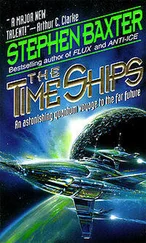And, following old theories of the formation of the planets, it was thought that the further out your world was from the sun, the older it would be. So “young” Venus, blanketed in cloud, was thought to be a world of ocean and swamp, the seas fizzing like soda pop from excess carbon dioxide, the land probably dominated by dinosaur-like monsters. And Mars, further out from the Earth, must be older than Earth, and host to an advanced, ageing civilisation—and, being older, Mars must be drying out. Around 1900, astronomer Percival Lowell put these ideas together with tentative, blurred telescopic observations of Mars to construct one of the most beautiful (if most wrong) theories in the history of science. Lowell believed the Martians were working together on a planetary scale to fix their own climate change crisis, their own ecocide; they had built a global network of canals to use polar cap meltwater to irrigate the drying fields. Lowell believed he saw these canals through his telescope.
This was the Mars that inspired some of the greatest works of early science fiction, including H. G. Wells’ The War of the Worlds (1897), in which the Martians reverse the Avatar story and come to our world for its resources—including human blood!—and Edgar Rice Burroughs’ “Barsoom” novels, beginning with A Princess of Mars , serialised from 1912. In Burroughs’ books “John Carter, gentleman of Virginia” is transported to a Mars of warring tribes and exotic multilegged beasts, and finds a beautiful humanoid girl to fall in love with, “Dejah Thoris, Princess of Helium.” James Cameron says that his absorption in science fiction of all kinds over thirty years fed into the creative process behind Avatar , and he was specifically inspired by Barsoom, and the adventures of John Carter, a soldier on Mars.
Burroughs allowed for Mars’ low gravity, by the way. Like the Na’vi, some of his Martians are taller than humans—“fifteen feet tall.” And on Barsoom there are immense life-sustaining machines of the kind I speculated in Chapter 2must support a post-ecocide Earth: “Every red Martian is taught during earliest childhood the principles of the manufacture of atmosphere…”
This, anyhow, was the solar system, bursting with life and ripe for colonisation, that shaped the expectations of the early space explorers. So it was quite a shock when the first unmanned spacecraft sailed past Mars in 1964, over an area where “canals” were expected to be seen (even though it was no longer thought they would be artificial)—only to find craters , like the desolate moon.
And then there was the moon itself. It might be lifeless but, before the Apollo missions, space visionaries believed that the apparently barren moon would harbour hidden riches for future human colonists—especially water. As late as 1968, Arthur C. Clarke, in The Promise of Space , wrote, “The most valuable substance of all—as it is on Earth, when in short supply—would be water… [Water] certainly exists on the moon; the question is where, and in what form.” But Apollo brought a grave disappointment. Analysis of the moon rocks seemed to show not the slightest trace of water, either now or in the past. The dark lunar “seas” proved to be made of basaltic dust, not organic sea-bottom scum. To many, even inside the space programme, Apollo, intended as a first step into the cosmos, in the end served only to prove that we cannot colonise space.
So the space planners turned away from the old dreams. Moonwalkers like Charles Duke were suddenly left stranded. And if you wanted to write science fiction about Barsooms and other inhabited worlds, you had better set them among the stars, like Avatar .
But maybe we jumped to conclusions. Since Apollo we have come to suspect that the sky is after all full of riches, even the much-maligned moon. But to reach them, we’ll first have to get off the Earth.
It has always been difficult to make the first step off Earth and into space.
It’s easy on the moon, with its one-sixth gravity. Charlie Duke and his colleague aboard their tiny Apollo lunar module were able to return to lunar orbit with an engine and fuel tanks you could have fitted in a camper truck. By comparison, to climb out of Earth’s gravity well, the space shuttle stack was over fifty metres tall and weighed around two thousand tonnes, most of which was fuel, and oxidiser to burn that fuel. If Earth’s gravity was just a little stronger, in fact, no chemical-fuel rocket system like the shuttle would be able to escape from Earth. And if not for the pressure of military requirements which drove the development of rocketry, we might never have reached space at all; the first astronauts and cosmonauts rode into orbit on converted ballistic missiles.
The space shuttle worked, flying for three decades, despite the design flaws that led to two terrible accidents. But now the programme has been cancelled. And in February 2010 President Obama also dropped funding for NASA’s follow-up “Constellation” programme, which would have replaced the shuttle with a new range of human-rated rockets and spacecraft. The hope is that private industry will step up to the plate with a replacement launch system. Obama’s intention is evidently that the money freed up by not having NASA develop its own vehicles will help prime the pump for a new age of access to space. But for now it looks as if U.S. astronauts will have to hitch rides to orbit on Russian rockets.
Space is an expensive business, however, especially as a start-up. There’s a saying in the business that you need to spend billions to make millions out of space. But there are individuals with such means, and a drive, it seems, to make childhood ambitions come true. Companies like SpaceX and Blue Origin are rushing to develop their own launch systems capable of taking humans safely to orbit. NASA would be a customer, as would companies like Virgin Galactic, with its plans to take passengers on hops into space. SpaceX was established by South African dotcom entrepreneur Elon Musk, one of the creators of Paypal, and Blue Origin was founded by Jeff Bezos, the president of Amazon. This is new money being leveraged to achieve old dreams.
However, while the money might be new many of the designs are relatively conservative: capsules launched aboard chemical-rocket firecrackers, just like Apollo. Even the space shuttle had bits that were either discarded, like the external fuel tank, or had to be fished out of the ocean and rebuilt, like the solid rocket boosters.
What we need is not another throwaway rocket system. What we need is a true spaceplane. What we need is Avatar ’s Transatmospheric Vehicle Valkyrie.
The space shuttle was boosted by rockets to orbit, but then could only glide back to Earth, unpowered. A true spaceplane would be capable of taking off unaided from a runway like a conventional aircraft, reaching orbit, and then returning to land. (In the industry jargon this is SSTO—single stage to orbit.)
This is an old dream. Before the development of Project Apollo the U.S. Air Force dreamt of spacecraft with wings. It flew the famous X-15 rocket plane, and it funded extensive research into “lifting bodies,” capable of very high-speed flight. Some of this research fed into the space shuttle programme, and today the USAF is experimenting with a scaled-down spaceplane known as the X-37B.
There are technologies on the horizon that could be developed to achieve a true SSTO craft. One promising technology is the “scramjet”: a supersonic combustion ramjet, which would enable aircraft to reach extremely high speeds within the atmosphere. A conventional “ramjet” draws in air to collect oxygen with which to burn its fuel, but the airflow within the engine is subsonic (below the speed of sound), so if the craft itself is travelling faster than sound, the intake of air has to be slowed down, creating drag. But in a scramjet the air passing through the engine can be supersonic—faster than sound, inside the engine itself. This enables the aircraft itself to reach much faster speeds.
Читать дальше










